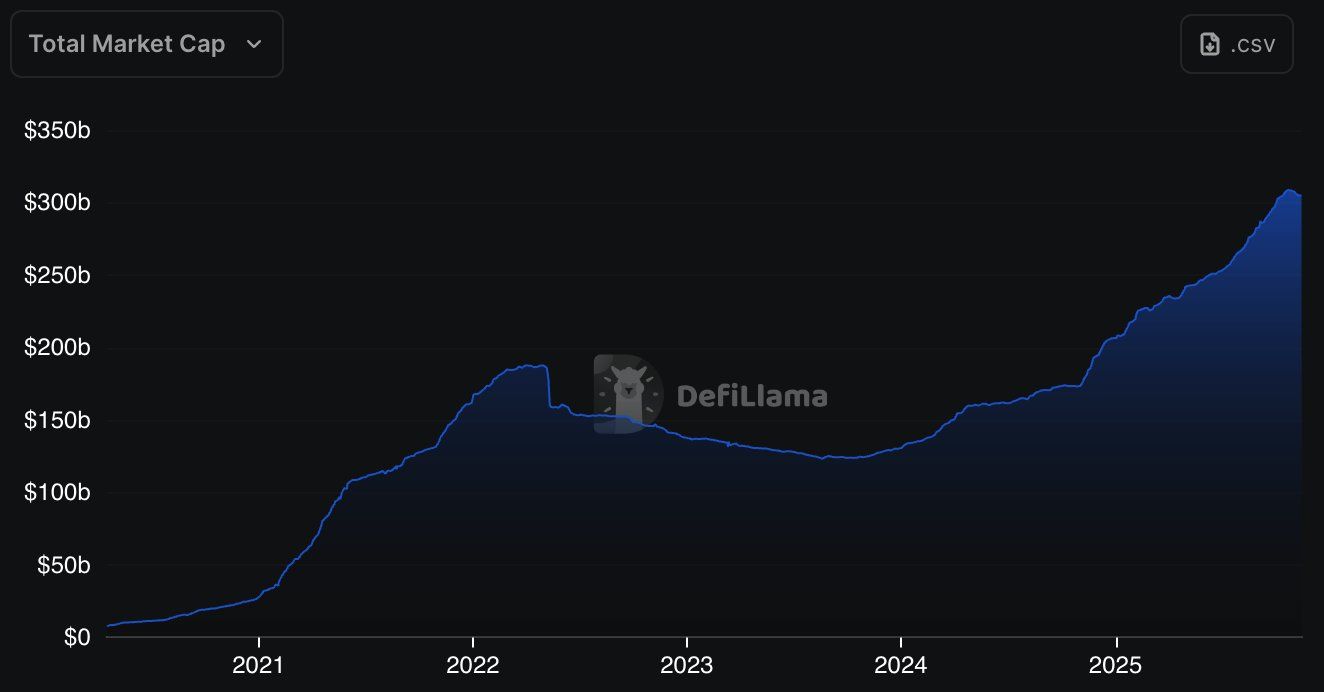In November 2025, the Tether Dominance index (USDT.D) — the share of USDT’s market cap relative to the total crypto market cap — officially surpassed 6%. It also broke above a descending trendline that had remained intact since 2022.
Analysts have expressed concern as USDT.D breaks a long-term resistance level. The move often signals the beginning of a major correction or even an extended bear market for the entire crypto market.
How Significant Is the Rise of USDT.D in the Market Context of November?
TradingView data shows that USDT.D reached 6.1% on November 18 before pulling back to 5.9%.
Sponsored
Sponsored
Earlier in the month, this metric sat below 5%. The increase reflects heightened caution among investors. Many have rotated capital into the most liquid stablecoin instead of deploying funds to buy deeply discounted altcoins.
Historical data indicate a strong inverse correlation between USDT.D and total market capitalization. Therefore, USDT.D breaking above a trendline that has held for nearly four years may signal deeper market-wide declines ahead.
Several analysts expect USDT.D to climb toward 8% by the end of the year, implicitly suggesting that a bear market may be forming in November. This projection has merit because fear continues to grow and shows no signs of easing.
In addition, the well-known analyst Milk Road highlights a notable shift in the stablecoin market. DefiLlama data shows that the total stablecoin market cap fell from $309 billion at the end of October to $303.5 billion in November.

The stablecoin market has shed approximately $5.5 billion in less than a month. This marks the first significant decline since the 2022 bear market. The DefiLlama chart reveals that, after four years of continuous growth, the curve has flattened and is starting to turn downward.
The combination of a shrinking stablecoin market cap and a rising USDT.D suggests a broader trend. Investors appear not only to be selling altcoins into stablecoins but also withdrawing stablecoins from the market entirely.
“Expanding supply means fresh liquidity entering the system. When it flattens or reverses, it signals that the inflows powering the rally have cooled,” Milk Road said.
However, Milk Road still sees a glimmer of optimism in the current landscape. He argues that the situation does not necessarily indicate a crisis. Instead, the market is operating with less “fuel” for the first time in years, and such shifts often precede price changes.
Furthermore, a recent BeInCrypto report notes a contrasting trend. Despite the declining market cap, the amount of stablecoins held on exchanges has increased in November. This suggests that some investors view the downturn as an opportunity to position themselves for the end of the year.
